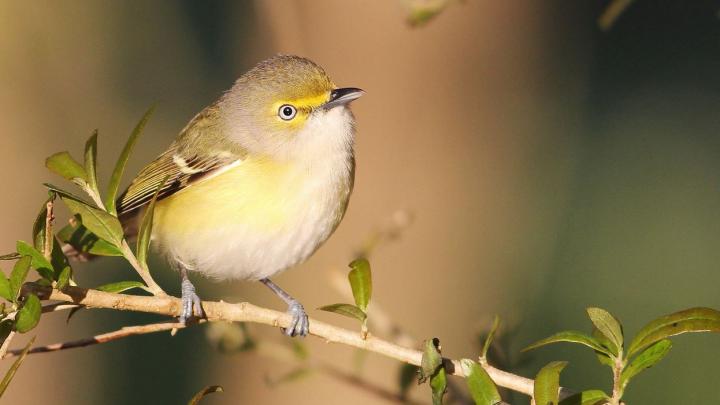
Credit: Cameron Rutt
Overabundant deer can spell trouble for people, including frequent car collisions and the spread of zoonotic diseases. But deer can also disrupt wildlife communities — such as forest songbirds — by eating away their habitat. In a new study published in Landscape and Urban Planning, researchers show that areas in the eastern U.S. with high deer numbers tend to have fewer birds that need forest shrubs. These species use low-lying foliage to hide their nests from predators and to hunt for insect prey. Unfortunately, these plants are also on the menu of the white-tailed deer.
And there are a lot of deer. In the past, deer numbers were relatively low, held in check by native predators such as black bears, mountain lions, and red wolves. Now, bears are largely restricted to the Appalachians, mountain lion range has retreated far west, and the red wolf is at the brink of extinction. Deer have fared much better under heavy human settlement in the east — aside from predator removal, roads and housing slice the forest into pieces, providing forage at sunlit edges and cover in the woods. Virginia, where the study was conducted, may contain as many as one million deer. That's a 36-fold increase in the last 80 years.
While hunters partly filled the role of the departed predators, urban areas are largely off limits to deer harvest. Folks with high-power rifles will usually not prowl the local city park, and so deer mow down nearby gardens relatively undisturbed.
But overabundant deer don't stop at daffodils. As more deer pack suburban forest fragments, they denude understory greenery and with it songbird habitat. The authors found that study sites with many deer were virtually devoid of species like the Hooded Warbler, White-eyed Vireo, and the Prairie Warbler — species that rely on the forest undergrowth. Most of these birds are already in trouble due to habitat loss. The Prairie Warbler, for instance, a perky yellow bird with streaked sides, has been designated a species of conservation concern following range-wide population declines.
Counting deer and woodland birds was tricky. Adequate assessment of bird numbers required knowledge of their vocalizations, repeated visits to study areas early in the morning when birds were most active, and lots of statistical modeling. Deer are skittish and active at night, but they do leave tangible evidence of their presence – poop (this evidence is especially copious after a bellyful of warbler habitat). As though counting droppings wasn't fun enough, estimating deer numbers also required lots of statistical work.
Researchers estimated bird and deer numbers at two regions of Virginia – one on the coast and one inland. Coastal Virginia is more urbanized than the rural inland, and correspondingly the study found more than twice as much forest fragmentation there. The coastal region – with as many as twenty-eight thousand droppings per hectare – is where the study found significant correlations between deer and birds. "There were a lot of deer" says Vitek Jirinec, a coauthor of the study. "One of our vehicles was hit by a deer while going out for surveys – it ran into the side of the car and dented the door. Maybe the deer were onto us."
The fact that humans affect wildlife populations is not new, but sometimes the story is more complicated. This study suggests our land use practices that promote high deer numbers might be changing local ecosystems – with implications for declining songbirds and the people who enjoy them.
###
Article reference:
Vitek Jirinec, Daniel A. Cristol, and Matthias Leu. "Songbird community varies with deer use in a fragmented landscape." Landscape and Urban Planning 161 (May 2017): 1-9. http://dx.doi.org/10.1016/j.landurbplan.2017.01.003
Media Contact
Vitek Jirinec
[email protected]
http://americanornithologypubs.org/





